Planet Earth is endowed with different formations resulting from its own formation process, as well as the action of nature and, mainly, of man. One of the environments that attracts a lot of attention from scholars are deserts.
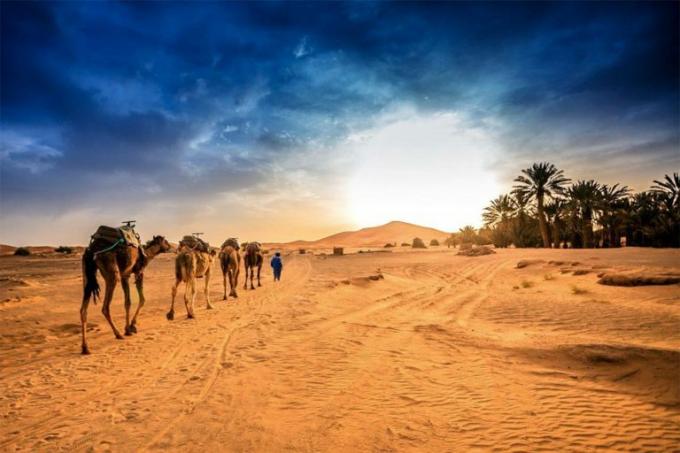
When we mention the term, a huge amount of sand and a very, very hot place always comes to mind. Yes, most deserts, in fact, are at warmer temperatures, but desert formations are just as varied as the rest.
Check out, below, a brief concept of desert followed by a list containing the ten largest examples in the world.
Index
- What is desert?
- types of desert
- the biggest deserts in the world
- other deserts
What is desert?
Geographically speaking, deserts are formations that receive little rainfall, ie rain. But, it is very little, reaching rates below 400 mm per year. About 20% of the Earth's surface is made up of deserts.
PUBLICITY
Deserts are formed by the process of soil desertification, that is, the loss of vegetation, in addition to the action of the wind. Desert landscapes are typical and reflect reduced soil development and scarcity of vegetation.
The soil consists mainly of sand with dune formation, however, the lowlands can also be formed by salt, as we will see later. Some contain valuable mineral deposits formed by exposure to erosion and arid environment.
Vegetation, when present, is sparse and spaced, with specimens of grasses and small shrubs, occupying spaces where little water can accumulate. As for the fauna, it is composed of rodents, reptiles and insects.
Examples include desert cats, kangaroo rats, lizards and snakes. Like plants, they are resistant to lack of water and come out of their burrows at night. Some of them go their entire lives without ingesting a single drop of liquid, extracting it from food.
In sandy deserts, it is common to form an isolated area of vegetation adjacent to a freshwater spring. These are oases, very important for caravans and trade routes in these desert areas.

Even in the face of a hostile environment liable to deaths from heatstroke and dehydration, some cultures, such as the Tuareg, Bedouins and Pueblo Indians made the desert home for many centuries, adapting to the temperature variations and storms of sand.
Thanks to technology, desert regions ended up less inhospitable thanks to the use of advanced irrigation systems, air conditioning and desalination. Farms are widely found in Israel and the United States, for example.
types of desert
The classification of desert types varies according to their predominant characteristics. There are cold snow-covered deserts in which precipitation falls and remains frozen and compact. Or, non-polar deserts, made up of salt and sand.
PUBLICITY
Below, we list the main types of desert. Check out.
Monsoon Deserts
Monsoons are wind systems that develop in response to temperature variations between oceans and the continent. Therefore, these processes change between seasons. Examples of monsoon deserts are the Thar (Pakistan) and Rajasthan.
Counter-trade wind regions
These deserts are formed from the heating of the air near the equatorial region. Counter-trade winds are present in the bands divided by the Equator Line and dissipate clouds, allowing greater incidence of sunlight.
Most of the world's deserts are located in these regions. Among them is the Sahara Desert, which has recorded temperatures of 58°C during the day and very low temperatures at night.
coastal deserts

The formation type is usually located on the western edges near the Tropics of Cancer and Capricorn, affected by cold ocean currents that run along the coast. In these regions, cold air occupies less moisture than hot air.
PUBLICITY
Coastal deserts are usually located in mountainous regions or parallel to the coast, where the winds were a barrier that force the air mass upwards, precipitating moisture in the form of rain or snow.
Furthermore, they have complex and unstable characteristics. As products of oceanic, terrestrial and atmospheric systems, they can present fogs originated from cold currents that cover the surface with a mantle blocking the solar radiation.
A typical example is the Atacama Desert which features coastal blockades on two sides. One of them prevents the moisture from the Pacific from expanding and, to the east, the Andes block the moisture coming from the Amazon.
Average latitudes
Also located between the Tropics of Cancer and Capricorn, they are far from oceanic drainage basins and present annual variations in temperature. Their training is based on the movement of air masses and the lack of humidity in the tropics.
Examples are the Mojave and Sonora Deserts in the United States.
polar deserts
PUBLICITY
You know that idea you have of a hot desert full of sand? Forget it! These ones are covered by rocks, gravel and snow. These are areas where evaporation exceeds annual precipitation and low temperatures cause the water to freeze.
Located in Greenland and Antarctica.
Moist air barriers
The formation of this type of desert is due to mountainous barriers that do not allow the arrival of wet clouds. In this way, as the air rises over the mountain, the water precipitates and the warm air loses its moist content.
The desert then forms on the opposite side. The Judean desert, located in Palestine and Israel, in addition to Death Valley, in the United States, are two examples.
the biggest deserts in the world
See, below, which are the largest deserts in the world and their main characteristics:
1st Place: Antarctica
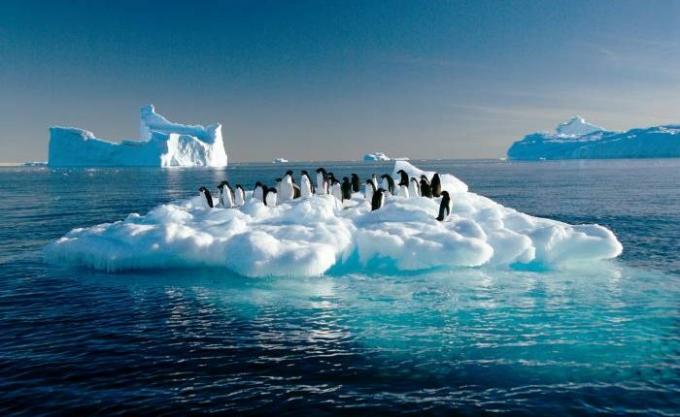
With 14,000,000 km² of extension, it registers an average temperature of -30°C, but it has already registered -80°C. Human abodes are related to research stations. Average altitudes reach 2,000 m and the main animals are seals, whales, penguins and seagulls.
2nd Place: Sahara
- Free Online Inclusive Education Course
- Free Online Toy Library and Learning Course
- Free Online Math Games Course in Early Childhood Education
- Free Online Pedagogical Cultural Workshops Course

The best known desert in the world is 9,000,000 km². It is the largest of the hot deserts and involves areas of Sudan, Tunisia, Niger, Mauritania, Morocco, Mali, Libya, Egypt, Chad and Algeria. It has fertile points near the Nile, mobile dunes and rocky bodies.
3rd Place: Arabian Desert

The 1,300,000 km² of extension covers the territories of Yemen, Kuwait, Oman, Iraq, Jordan, Syria and Saudi Arabia, in the Middle East. It is one of the least biodiverse areas on Earth, but it is rich in minerals, such as oil, and rich buildings.
4th Place: Gobi Desert

Located in northern China and southern Mongolia, it is 1,125,000 km² in length. The relief is marked by dunes and rocky mountains. It has scarce flora and fauna, but it is home to human populations, mostly nomadic.
5th Place: Kalahari
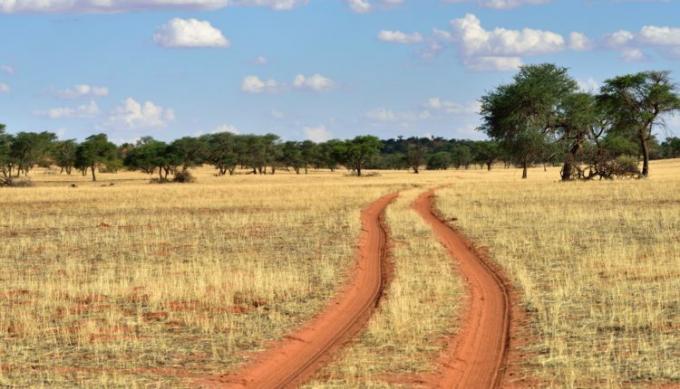
The second largest in Africa is 930,000 km² in length. It covers the territories of Zimbabwe, Zambia, Namibia, Angola, South Africa and Botswana. It has relatively diverse fauna and flora, in addition to being home to African tribes.
6th Place: Sandy Desert
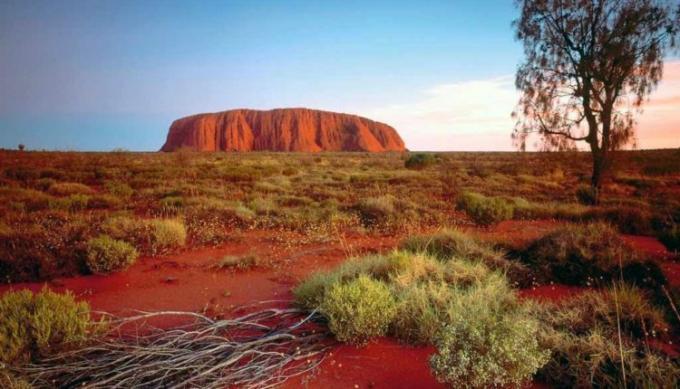
Located in Australia, it is 414,000 km² in length and is also known as the Western Desert.
7th Place: Kara Kum Desert

It has an extension of 350,000 km² and is located in Turkmenistan. Its population is sparse, with an average of one person per 6.5 km².
8th Place: Taklamakan Shamo Desert
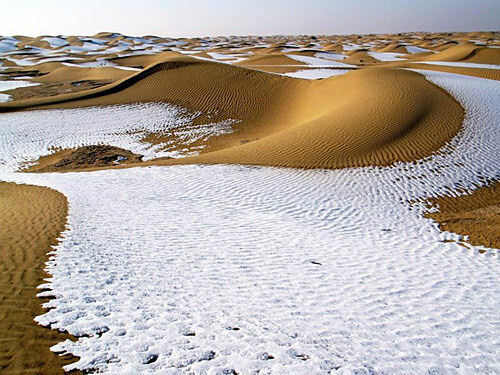
The 344,000 km² extension is located in Central Asia, close to China.
9th Place: Namibian Desert

Occupying territories of Namibia and Angola, the desert is approximately 310,000 km² in length. It is considered to be the largest game reserve in Africa.
10th Place: Thar Desert

Known as the Indian Desert, it is located near Pakistan and has an approximate extension of 260,000 km².
other deserts
The list of deserts is extensive so, in addition to the largest in the world, we divide those already registered by geographic regions. Come on?
South America
- Atacama Desert (driest region on Earth) – Chile and Peru
- Desert of La Guajira – Colombia/Venezuela
- Monte Desert – Argentina
- Patagonia Desert – Argentina and Chile
- Sechura Desert – Peru
North America
- Channeled Scablands
- Chihuahuan Desert – Mexico
- Mojave Desert
- Sonoran Desert - USA and Mexico
- Great Salt Lake Desert - Utah
- Painted Desert -Arizona
- Amargosa Desert
- Black Rock Desert - USA
- Smoke Creek Desert – USA
- Brazilian Nymphet - Maine
- Carcross Desert - Yukon Territory
- Desert of Alvord
- Red Desert - Wyoming
- desert of sevier
- Lechuguilla Desert - Arizona
- Yp desert
- Yuha Desert
- Yuma Desert
- Colorado Plateau
- Colorado desert
- ghost desert
Middle East
- Dasht-e Kavir – Iran
- Dasht-e Lut – Iran
- Jewish Desert - Israel
- Desert of Maranjab
- Negev Desert - Israel
- Ramlat al - Sab`atayn
- Wahiba Sands – Oman
Europe
- Accona Semi Desert - Italy
- Bardenas Reales – Spain
- Błędowska Desert – Poland
- Deliblatska Peščara - Vojvodina
- Desert of Monegros – Spain
- Oleshky Sands – Ukraine
- Oltenia-Romania
- Swimming pools - Italy
- Desert of Taverns -Almeria
Oceania
- Central Desert – Central Australia
- Gibson Desert – Central Australia
- Great Victoria Desert
- rangipo desert
- Simpson's desert
- Strzelecki Desert
- tanami desert
- Rocky Desert of Sturt
- Desert of Pedika
Asia
- Badain Jaran Desert – China
- Betpak-Dala Desert – Kazakhstan
- Cholistan Desert – India and Pakistan
- Dasht-eKavir
- Dalasc-e Lut
- Indus Valley Desert – Pakistan
- Kharan Desert – Pakistan
- Kysyl Kum – Kazakhstan and Pakistan
- Lop Desert – China
- Ordos Desert - Northern China
- Rubal-Khali – Saudi Arabia
- Thal Desert- Pakistan
Arctic
- arctic desert
- arctic russia
Africa
- Algeria Desert – part of the Sahara, Algeria
- Blue Desert - Egypt
- Karoo Semi Desert - South Africa
- Libya Desert – part of the Sahara, Libya
- Nubian Desert – Sudan
- Owami Desert - Nigeria
- Sinai Desert - Sinai Peninsula, Egypt
- blue desert
- White Desert – Egypt
- Mocamedes Desert – Angola
The password has been sent to your email.

